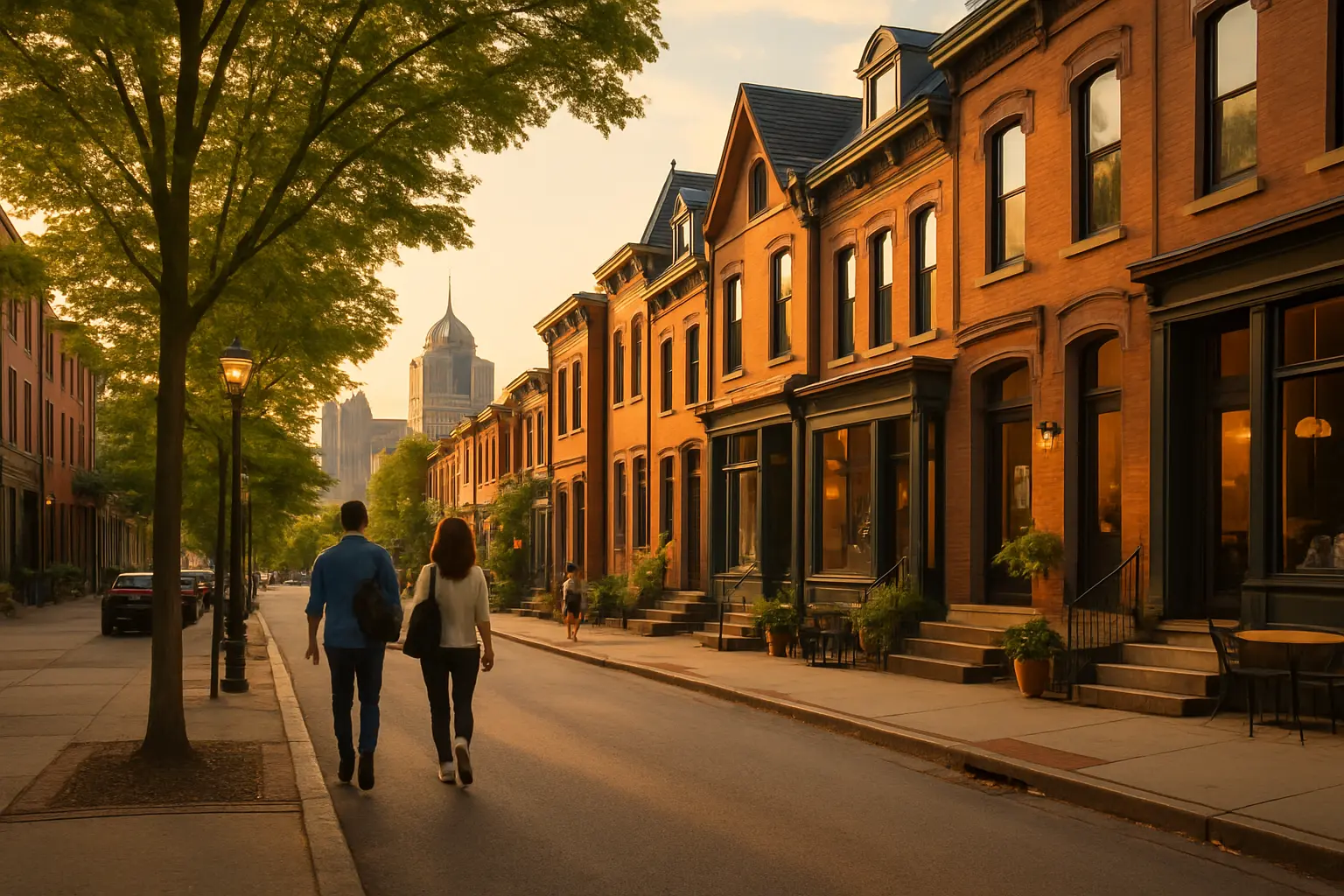Pittsburgh's Hidden Gems: The Most Walkable Neighborhoods for Modern Living
Discover the perfect blend of urban convenience and residential charm in Pittsburgh's most pedestrian-friendly communities.

The Rising Demand for Walkable Neighborhoods in Pittsburgh
As urban living evolves, Pittsburgh's walkable neighborhoods have become increasingly coveted destinations for homebuyers seeking a perfect balance between city convenience and residential comfort. These pedestrian-friendly communities are witnessing substantial growth in property values, with walkability emerging as a key factor in real estate decisions.
Recent market analyses show that homes in walkable Pittsburgh neighborhoods command premium prices, often 15-20% higher than comparable properties in car-dependent areas. This trend reflects a broader shift in lifestyle preferences, particularly among young professionals and empty nesters seeking vibrant, accessible communities.
Pittsburgh's Top Walkable Neighborhoods
Shadyside
Known for its tree-lined streets and vibrant shopping districts, Shadyside exemplifies the perfect walking neighborhood. Residents enjoy:
- Walkable access to Walnut Street's boutiques and restaurants
- Easy connections to public transportation
- Beautiful historic architecture mixed with modern amenities
Lawrenceville
Once an industrial hub, Lawrenceville has transformed into a walker's paradise featuring:
- Butler Street's eclectic mix of shops and eateries
- Arsenal Park and riverside trails
- Thriving arts scene and community events
South Side
With its flat terrain and concentrated amenities, South Side offers:
- East Carson Street's extensive commercial corridor
- Access to the Three Rivers Heritage Trail
- Diverse dining and entertainment options
Transforming the Residential Experience
Enhanced Safety and Community Connection
Walkable neighborhoods naturally create safer environments through increased foot traffic and neighbor interaction. These communities foster stronger social bonds as residents regularly encounter each other during daily activities.
Sustainable Living
By reducing car dependency, these neighborhoods contribute to:
- Lower carbon footprints
- Improved air quality
- Better physical and mental health outcomes
"Pittsburgh's walkable neighborhoods aren't just about convenience – they're about creating sustainable, connected communities where residents can truly thrive."
Investment Potential and Future Growth
Investing in Pittsburgh's walkable neighborhoods represents a smart long-term strategy. These areas consistently show:
- Strong property value appreciation
- High rental demand
- Resilience during market fluctuations
As Pittsburgh continues to evolve, these walkable communities are positioned to lead the city's residential real estate market, offering both lifestyle benefits and strong investment potential for modern homebuyers.
Conclusion
Pittsburgh's walkable neighborhoods represent the future of urban living, offering an appealing combination of convenience, community, and sustainability. For homebuyers seeking a modern lifestyle that balances city amenities with residential charm, these communities provide an ideal solution that promises both personal satisfaction and financial reward.


